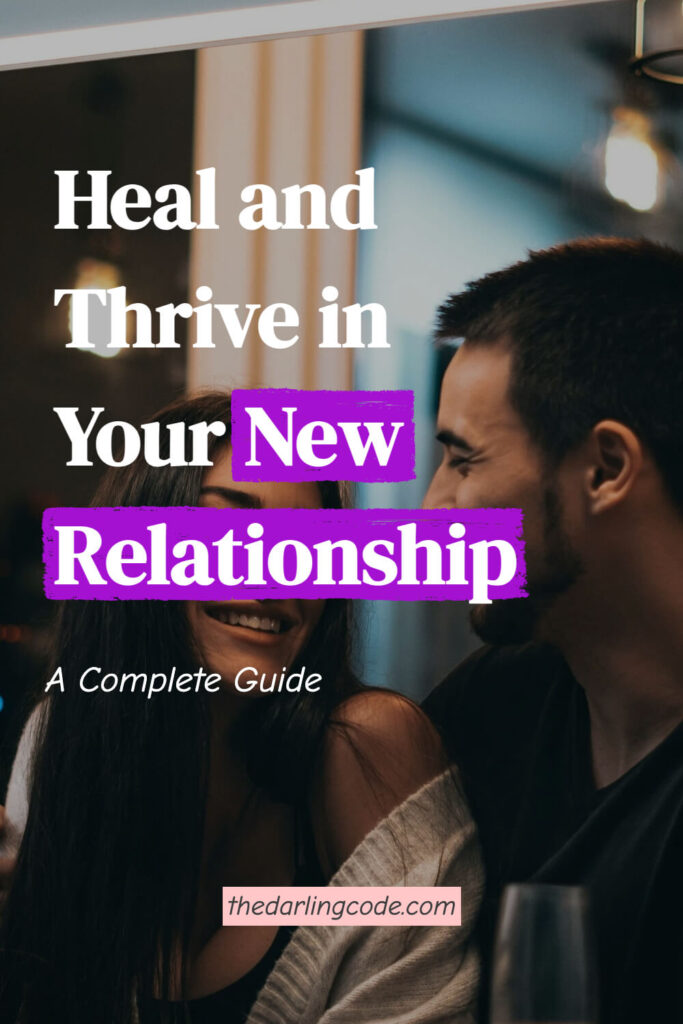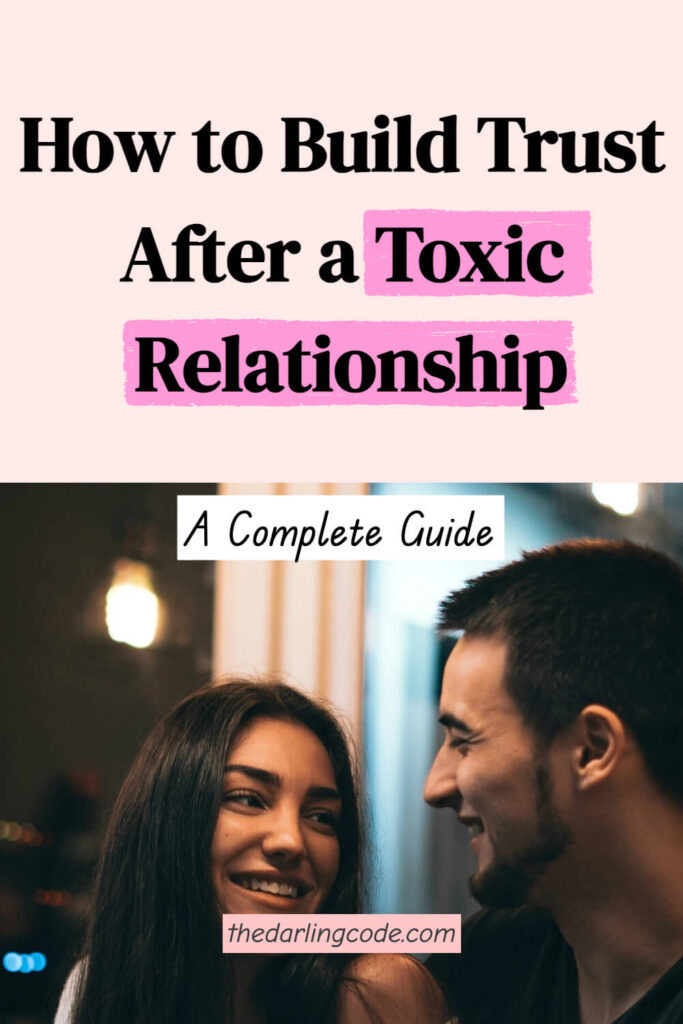How to Navigate a New Relationship After a Toxic Relationship: A Guide to Healing and Loving Again
The experiences shared in this article are based on real emotional journeys, but all personal details are anonymized and used with the explicit written permission of the clients. Any resemblance to actual persons, living or dead, is purely coincidental. We are committed to treating all client stories with the utmost confidentiality and respect.
The Park Bench Breakthrough
Last spring, I sat with my client Clara on a weathered park bench, sipping lukewarm coffee.
She had just returned from a weekend away with someone new—a man who treated her with care and patience, so different from the toxic relationships of her past.
“He held the door for me, remembered my latte order, and never raised his voice,” Clara said, twisting her napkin in her hands. “But I cried the whole drive home. Why?”
I could sense the weight of her question before she even asked it: Why did I feel so unsettled by something that seemed so… right?
It’s a question I’ve heard time and time again in my years as a relationship coach.
The truth is, healing from a toxic relationship doesn’t mean suddenly becoming “perfectly healed.” Instead,
it’s about learning to cope with the aftershocks—those moments when old fears resurface, when trusting again feels like the hardest thing in the world.
Clara wasn’t afraid of her new partner; she was afraid of her own ability to love again.
And I completely understand.
So, how do we start to heal and embrace new love after the wounds of a toxic past?
Let’s explore how you can begin to trust again, without letting past pain define your future.
Save this article for later—Pin it to Pinterest and come back when you need it! 📌

1. Rewire Your Red Flags
Not every alarm is an emergency.
Post-toxic relationships leave our nervous systems like hyper-vigilant security guards: A delayed text becomes abandonment.
A sigh during dinner feels like contempt.
Start differentiating trauma triggers from actual danger.
Try this exercise:
- Trigger: They don’t text back for four hours.
- Past script: “They’re ignoring me. I’m being punished.”
- Reality check: “They might be in a meeting. I’ll ask later.”
- Trigger: They don’t post you on Instagram.
- Past script: “They’re hiding me.”
- Reality check: Healthy partners often keep relationships private early on.
A client named Tessa panicked when her new boyfriend didn’t call after a work trip.
Turns out, his flight had been delayed—he’d texted, but her anxiety had blinded her.
“I almost sabotaged us over trauma, not truth,” she later admitted.
Action step: Keep a “False Alarm Log” this week.
Note 3 reactions that felt bigger than the situation. Revisit them after 24 hours.
2. Master the 10-Minute Pause Rule
Create space between triggers and reactions.
When old wounds flare (e.g., they critique your driving), avoid firing the “YOU’RE JUST LIKE MY EX” missile.
Instead:
- Excuse yourself: “Be right back—need to check on my laundry.”
- Ground: Splash water on your wrists. Name 3 things you see (“stained mug, wilting fern, chipped nail”).
- Ask: “Is this about them or my past?”
Scripts to borrow:
- “I’m feeling sensitive about this. Can we pause and circle back tomorrow?”
- “I need to process this alone for 10 minutes. I’ll be right here.”
Clara used this when her partner joked about her “perfectionist spreadsheets”—a sore spot from her ex’s nitpicking.
After breathing, she said: “I know you meant it lightly, but comments about my work style hit a nerve. Can we avoid those?”
3. Redefine “Moving Too Fast”
Healthy pacing isn’t just physical—it’s emotional.
Toxic relationships often rush intimacy (“You’re my soulmate!” by month two).
Now, consciously slow the vulnerability timeline:
Month 1-3: Share interests, values, and light preferences (“I’m a morning person”). Avoid trauma oversharing.
Month 4-6: Gradually introduce deeper needs (“I need weekends with friends to feel balanced”).
Month 6+: Discuss dealbreakers (kids, finances, boundaries with exes).
Green flag alert: When Clara told her partner, “I need to take physical touch slowly,” he replied,“Tell me what ‘slow’ looks like—I’ll match your rhythm.”
4. Conduct a Boundary Audit
Your needs aren’t up for debate.
Post-toxic relationships often condition us to be “flexible” to our detriment.
Reclaim your non-negotiables:
Step 1: List 5 things you’ll no longer tolerate (e.g., “Interrupting me mid-sentence”).
Step 2: Note 5 things you require (e.g., “Texting goodnight when apart”).
Enforcement tips:
- If they cross a boundary: “I really like you, but I need X to feel safe.”
- If they respect it: “Thank you for hearing me. That means a lot.”
A client’s ex had mocked her career; now, she states upfront: “Disparaging my work is a dealbreaker.”
5. Date Your Own Red Flags Too
Scrutinize yourself as much as them.
Trauma can turn us into the unhealthy partner. Watch for:
- Over-Explaining: Sending essays to justify running 10 minutes late.
- Preemptive Sabotage: Picking fights to “test” their loyalty.
- Fear-Based Control: “Where are you??” texts every hour.
Daily check-in:
“Am I being the partner I’d want to date?”
A client realized he’d copied his ex’s silent treatment habit.
Now, he says: “I’m upset. Let’s revisit this after I walk the dog.”
6. Celebrate the Boring Days
Peace isn’t a red flag.
Toxic relationships addict us to chaos.
If conflict-free weeks feel “weird,” lean in:
- Normalize mundane joy: Grocery runs, debating the best Taylor Swift album, laughing at the neighbor’s dog in pajamas.
- Beware familiarity traps: That coworker who trauma-dumps on date three might feel excitingly “intense”—not healthy.
Try “Comfort Spotting”: Share one low-key sweet moment nightly (e.g., “I liked when you brought me tea without asking”).
7. Keep a “Proof of Good” Jar
Collect evidence that this is different.
Anxiety will whisper, “They’ll hurt you like the last one.” Fight back:
How:
- Use a mason jar or phone notes.
- Add entries like:
- “He apologized without being asked.”
- “She asked before borrowing my sweater.”
- Review during doubt spirals.
Clara’s first entry: “We disagreed about vacation plans. No one yelled. We got smoothies after.”
8. Schedule Monthly “Check-Ins”
Don’t wait for crises to communicate.
Structure:
- Celebrate: “What’s felt good this month?”
- Tweak: “What needs adjusting?”
- Dream: “What adventures should we try?”
Example:
“I’ve loved our movie nights! Could we add monthly bookstore dates? And… I’m still nervous about last-minute plan changes. Could we confirm outings a day ahead?”
9. Remember: Leaving Is Still an Option
You’re allowed to walk away—even from “good” relationships.
Gentle exit lines:
- “I’ve realized I need to focus on my healing.”
- “You deserve someone fully ready—I’m not there yet.”
A client left a kind man because “he felt TOO safe—it bored me.”
She recognized her addiction to chaos.
Now, she’s engaged to someone calmly, unapologetically steady.
Final Words from The Darling Code
New love after toxicity is like relearning a language you once loved.
You’ll fumble verbs, forget idioms, and sometimes default to old dialects.
That’s okay.
Start here:
- Let them pick the movie and don’t apologize for hating it.
- When fear whispers, “They’ll leave,” whisper back, “Then they weren’t mine.”
- Text a friend: “I’m scared, but I’m trying.”
Your heart isn’t broken—it’s been retrofitted with better alarms. Trust it.
With heart,
The Darling Code
P.S. Save this to your Pinterest “Love & Growth” board.
Tonight, text someone: “Let’s get those lemon tarts we love this weekend.”
Joy rebuilds courage—one sugar-dusted bite at a time.
Got value from this article? Pin it to Pinterest for easy reference and help others discover it! 🌟


ABOUT THE AUTHOR
Carsey, Founder, Editor-in-Chief & Relationship Coach
Carsey is the heart and mind behind this space. As a Relationship Coach and Editor-in-Chief, she blends practical advice with storytelling to help you navigate love, connection, and everything in between.






